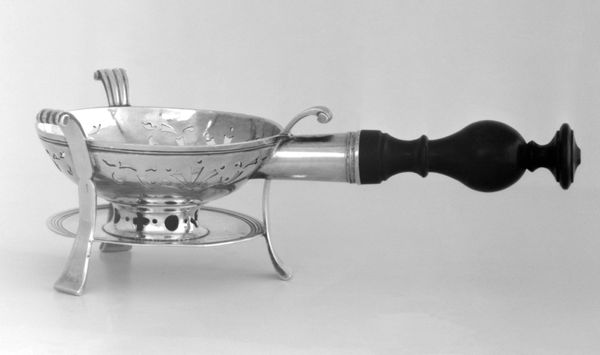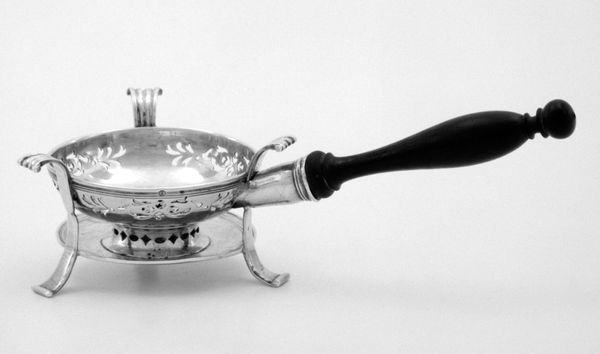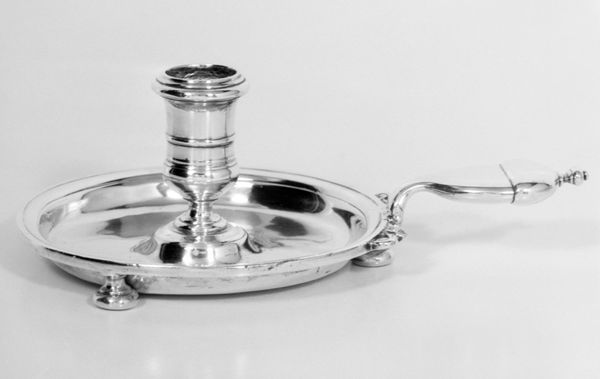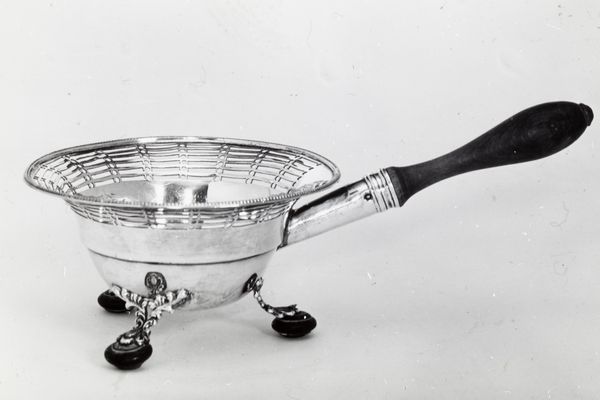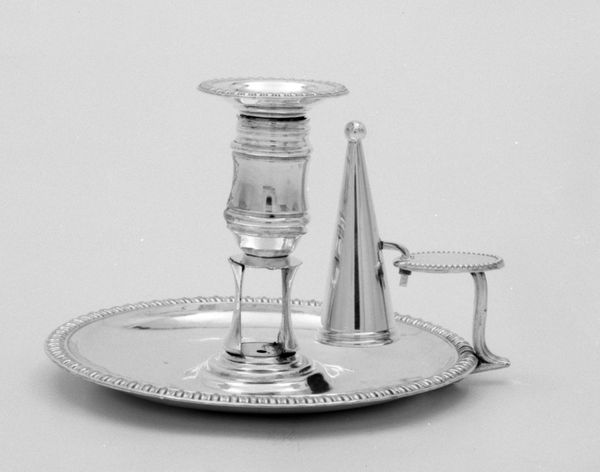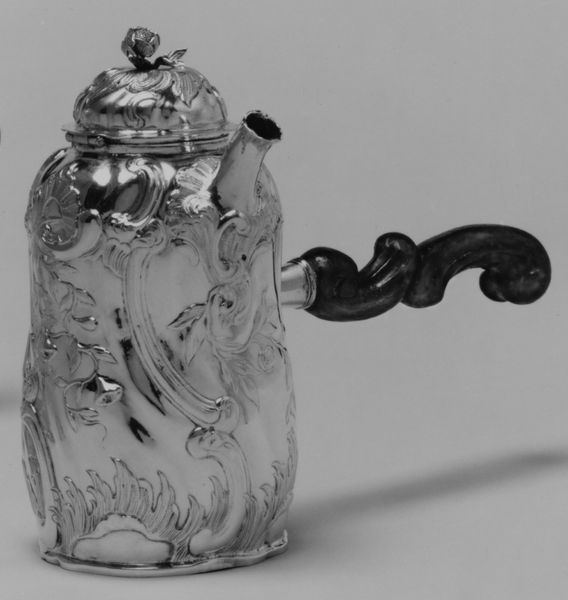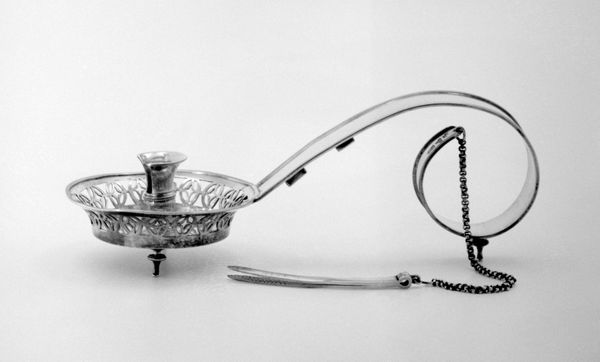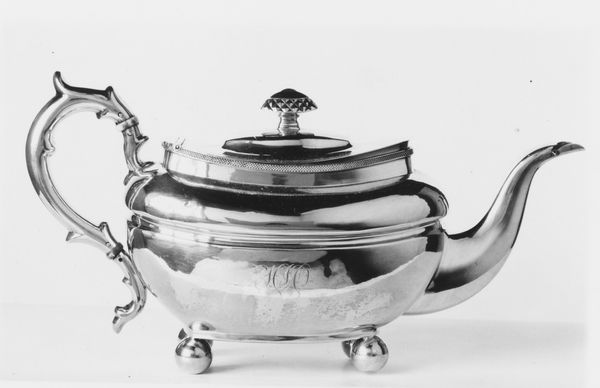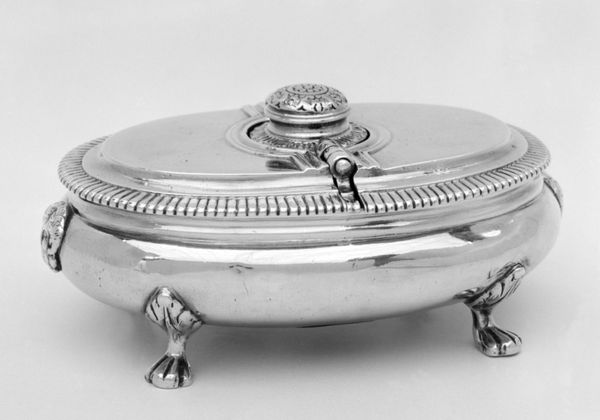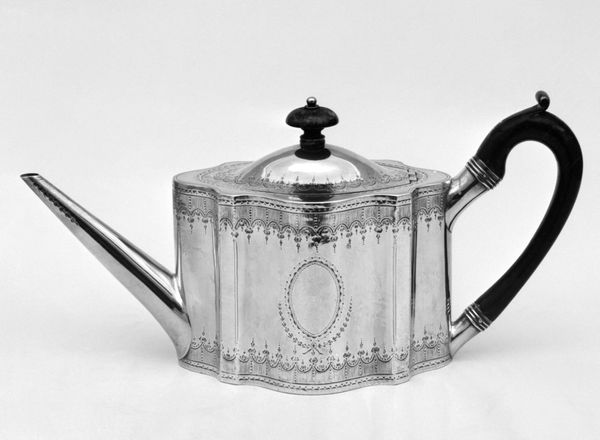
silver, metal, sculpture
#
silver
#
baroque
#
metal
#
sculpture
#
decorative-art
Dimensions: Overall (with handle): 4 × 11 3/8 in. (10.2 × 28.9 cm)
Copyright: Public Domain
Curator: The craftsmanship is really quite incredible, isn't it? We’re looking at a silver chafing dish dating back to the turn of the 18th century. I find myself wondering about the hands that shaped it. Editor: My first thought is actually a feeling of intimate, almost theatrical warmth. It evokes small gatherings, cozy parlors filled with quiet conversation and simmering delicacies. And the handle—doesn’t it invite you to imagine reaching for it? Curator: Indeed. Chafing dishes were frequently used to keep food warm at the table, offering a sign of elevated dining practice amongst privileged classes. The design features delicate pierced work and leafy flourishes in the Baroque style, showcasing the sophistication associated with this type of material culture. Editor: There's a playfulness too, with those petite little feet that end in these gorgeous ornamental orbs! But behind that decorative exterior, there's something deeply functional and comforting, too, isn't there? I feel like objects such as this offer an amazing insight to personal, domestic ritual from another time. Curator: Precisely. While grand paintings might portray historical narratives on a massive scale, objects like this chafing dish reveal how Baroque aesthetics manifested within everyday experience. The silver’s reflective surface further enhanced its perceived value and added an element of luxurious drama to any table setting. Editor: I almost wish I could hear the sounds—the clinking of utensils, maybe hushed chatter, the sizzle of whatever delicacy sat nestled inside this shining pot. I would so love to hold this in my hands, as if in holding it I am connecting to a very tangible link to the past. Curator: Yes, thinking about its original function, the object becomes more dynamic—linking material value, social display and the experience of culinary arts during the Baroque period. Considering the culture in which this object existed certainly influences our ability to comprehend its significance. Editor: Absolutely. It's pieces like these, functional objects elevated into something beautiful, that remind us even daily rituals can have a spark of magic. And to see an object still standing from hundreds of years ago leaves me with a lovely kind of breathless wonder. Curator: It inspires consideration of where such objects now exist, within a museum collection where the context of use and ownership shifts as visitors develop their own understanding of how history has shaped social hierarchies.
Comments
No comments
Be the first to comment and join the conversation on the ultimate creative platform.
